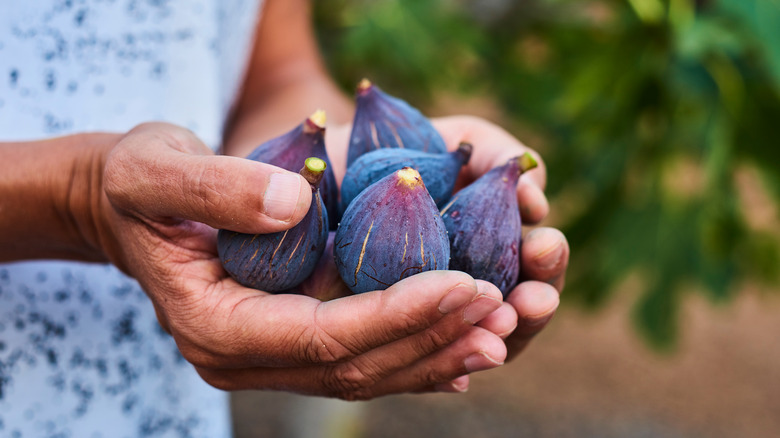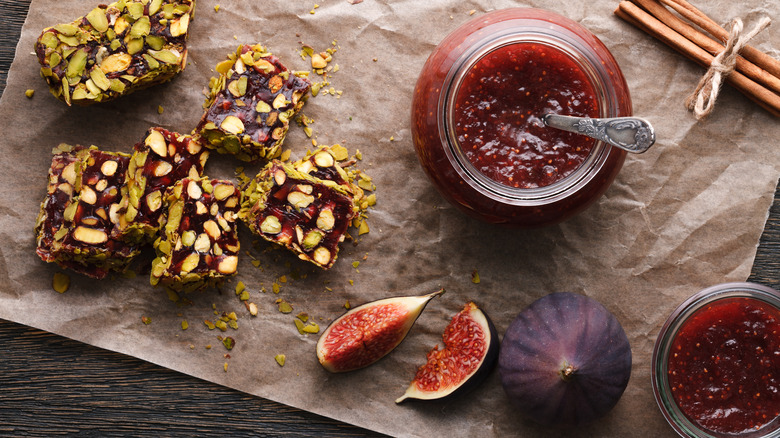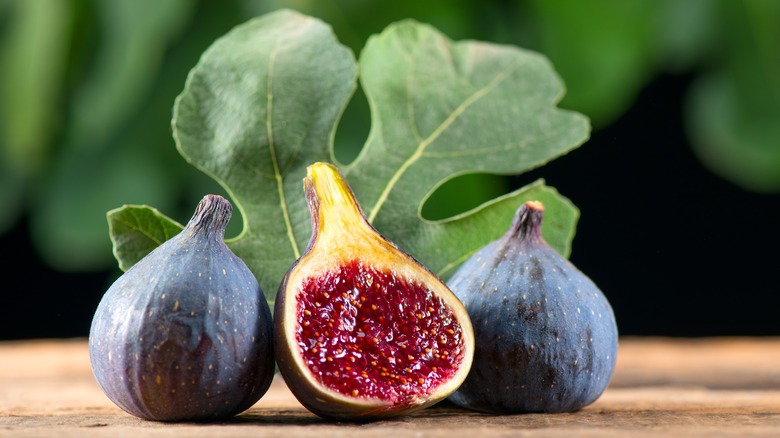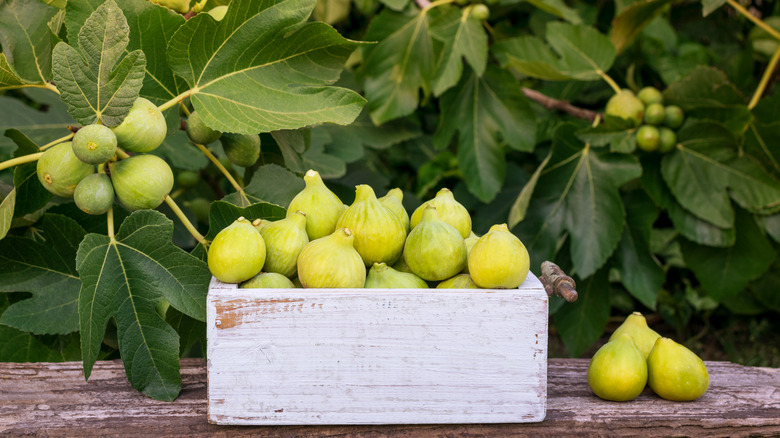This Country Produces The Most Figs
At the end of summer, when the trees turn red-rimmed, and the grass turns gold, many fruits become ready to harvest. Apples are handpicked, wine grapes are plucked and fermented, and figs are finally soft and sweet enough to eat. Figs, in particular, are a truly delightful end-of-summer treat. From skin to seed, their flesh is edible with floral and honey notes, which make it the perfect addition to any dessert. Whether you prefer them fresh, dried, whole, or peeled, figs are notorious for their gorgeous color and the spectacular texture of their inner seeds.
But this fruit isn't only delicious; it is also nutritious. Healthline claims that fresh figs are nutrient-rich with copper — which aids metabolism and energy — and vitamin B6, which is good for several bodily functions. Figs have also been utilized as at-home remedies for digestive and blood pressure problems. As with most other fruits, eating figs is good for you!
A Turkish flower
The fig (Ficus carica), while commonly viewed as and consumed like fruit, is actually an inverted flower from the mulberry family (via Britannica). The fig has been considered sacred in the Mediterranean and the Islamic regions of the world. It has a pollination ritual dependent on wasps which is at least 80 million years old, according to Food Print. So, if you ever wondered whether wasps provide anything beneficial to the world, now you know we have them to thank for figs!
As of 2019, the Helgi Library identifies Turkey as the top fig producer in the world after a whopping harvest of 310,000 tons of fruit, accounting for 23.6% of the total worldwide production. The second largest fig grower is Egypt, and the third is Morocco. In total, these three countries produce more than half of the world's figs.
Turkish cuisine adores the fig, and many cultural dishes have sprung up around it. Daily Sabah describes fig-centric dishes as both sweet and savory such as the famous "Noah's pudding," as well as other dishes such as fig dolma, incir yağlaması (buttered figs), sütlü incir tatlısı (fig dessert with milk), and even fig baklava. Both dried and fresh figs are used in traditional Turkish meals; the months of August and September, when the fruit is especially ripe, are the perfect time to enjoy the freshest Turkish cuisine.
The history of the fig
The fig has been a part of Mediterranean civilizations for thousands of years. Britannica says that the plant was first cultivated near the Aegean Sea, and there are records of it being consumed by the Greek Spartans and food historian Pliny the Elder.
Because of its nutritional value and how easily it grew throughout that part of the world, the fig was eaten by all, from those who were enslaved to those who ruled as Emperors. The Spruce Eats states that in many of the major world religions, such as Christianity, Islam, Hinduism, Judaism, and Buddhism, the fig symbolizes fertility, peace, and prosperity. Ancient Olympians were bestowed figs as rewards for great deeds, and the prophet Mohammed is said to have favored the fig himself. Needless to say, the fig has its roots spread thoroughly throughout the old world and has been incorporated into many cultures and belief systems. While we might see it as just a simple food item today, for most of world history, the fig has represented much more.
Where the figs thrive
Turkey remains the reigning champion of figs after all these centuries. Not even the traditionally power-house agricultural countries like China and the United States have grown figs to the level the Mediterranean has been capable of. The Almanac reminds us that figs primarily thrive in regions with long and hot summers and temperate winters. While there are heartier varietals of fig trees, they are not plentiful, which is why the Ficus carica is dominantly grown in Turkey, Egypt, Morocco, Greece, Iran, Spain, and Algeria — keeping the fig tree from experiencing stress from the cold (via Produce Blue Book).
In these countries, both white and black figs are grown (which look green and purple in color, respectively). And unlike bananas, apricots, and mangos, Foodiosity says that the fig does not continue to ripen after being harvested. So, if you are handpicking your fresh figs, you must pick the ones already soft and wrinkled to best experience the authentic flavor of this fruit.



